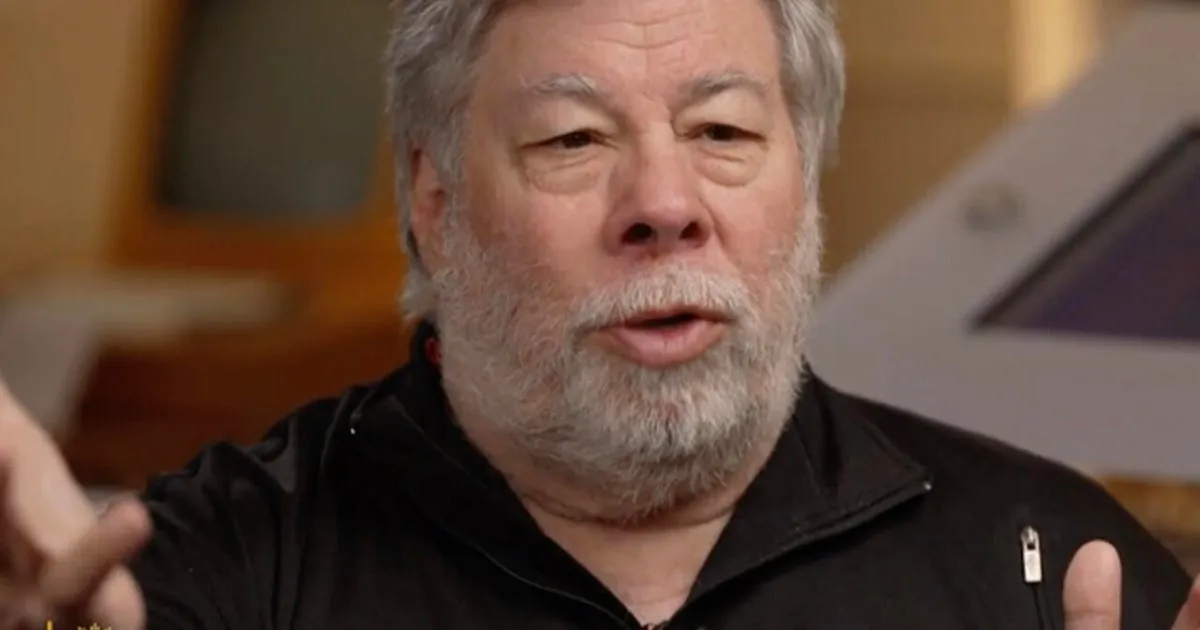
At the Computer History Museum in Silicon Valley, visitors can immerse themselves in the rich history of technology and its evolution over the decades. A prominent figure in this narrative is Steve Wozniak, the co-founder of Apple Inc. In 1976, Wozniak created the groundbreaking Apple I, which laid the foundation for the innovative company he and Steve Jobs would build together.
Reflecting on those early days, Wozniak described the experience as incredible, stating, "Just came on down wanting to build a neat product." While Wozniak was the creative genius behind the technology, Jobs excelled as the master salesman. The launch of the Apple II marked a significant leap forward, being the first personal computer capable of displaying color. Wozniak emphasized its impact, saying, "That was the machine that really made personal computers go, because it was so fun." He highlighted the numerous breakthroughs that stemmed from their collaboration, indicating how they were "so far out-of-the-box."
When asked about the computer revolution and its consequences, Wozniak acknowledged its positive aspects until the advent of the internet. He noted that the internet introduced new business models that could wield power over consumers, leading to some negative outcomes. This reality hit close to home for Wozniak when a YouTube scam exploited his image to defraud individuals out of their bitcoins. His wife, Janet Wozniak, discovered the scam through one of the victims, revealing a troubling email that prompted them to investigate further.
The scammers had edited videos of Wozniak discussing bitcoin, creating a deceptive frame that claimed if users sent a specified amount of bitcoin, they would receive double in return. Janet remarked, "Of course it's fraud," while Steve added, "Some people said they lost their life savings." Despite the clear fraudulent nature of the videos, Wozniak faced challenges in getting the content removed from YouTube, stating, "We never got to YouTube; our lawyer has gotten to their lawyer, that's all."
Wozniak's attorney, Brian Danitz, expressed frustration over the ongoing issues with YouTube, revealing that they had repeatedly requested action against the fraudulent content. In response to the lawsuit filed by Wozniak on behalf of several victims, including Jennifer Marion, who lost 0.9 bitcoins worth $59,000, the legal proceedings have lingered in the courts for five years, largely due to the protections afforded by Section 230 of the Communications Decency Act.
Section 230, often referred to as "the 26 words that created the internet," states that no provider or user of an interactive computer service shall be treated as the publisher of information provided by another information content provider. This law, enacted in 1996, limits the liability of platforms like YouTube, making it challenging for individuals seeking justice against online scams. Wozniak criticized the law's absoluteness, stating, "It's totally absolute."
In response to inquiries about Wozniak's lawsuit, Google issued a statement emphasizing their commitment to combating platform abuse and providing tools for users to report impersonation. However, Janet Wozniak argued that despite reporting the scam multiple times, YouTube did not take adequate action, expressing her disappointment that the platform allowed fraudulent videos to persist.
Jennifer Marion cautioned other users about the inherent risks on YouTube, emphasizing the need for vigilance: "These scams that have been refined to be very effective and psychologically manipulative are allowed to continuously be put up on YouTube." She advised against assuming that YouTube is a safe space, urging users to be cautious.
Scammers are not confined to YouTube; they have expanded their operations across the internet. Danitz highlighted alarming statistics, noting over $10 billion in AI scams and $5 billion in cryptocurrency scams occurring online. Wozniak lamented the prevalence of spam and phishing attempts, stating, "There's not enough real... muscle to fight it."
As a pioneer of the personal computer, Wozniak's original goal was to empower individuals through technology. He expressed admiration for the internet's initial potential to democratize information, allowing people to share knowledge without intermediaries. However, he critiqued the subsequent commercialization of the internet, noting how companies found ways to exploit it, leading to a loss of its original ideals.
Despite leaving Apple in the mid-1980s after selling most of his shares, Wozniak still receives a modest paycheck from the company for public appearances. He takes pride in Apple's rise to a trillion-dollar valuation, affirming, "Apple is still the best." However, he is not shy about voicing concerns when he disagrees with the company's direction, emphasizing, "Nobody buys my voice!"
For more information on Steve Wozniak, visit his official website. Special thanks to the Computer History Museum in Mountain View, California, for hosting this insightful discussion. Article produced by Christine Weicher and edited by Ben McCormick.